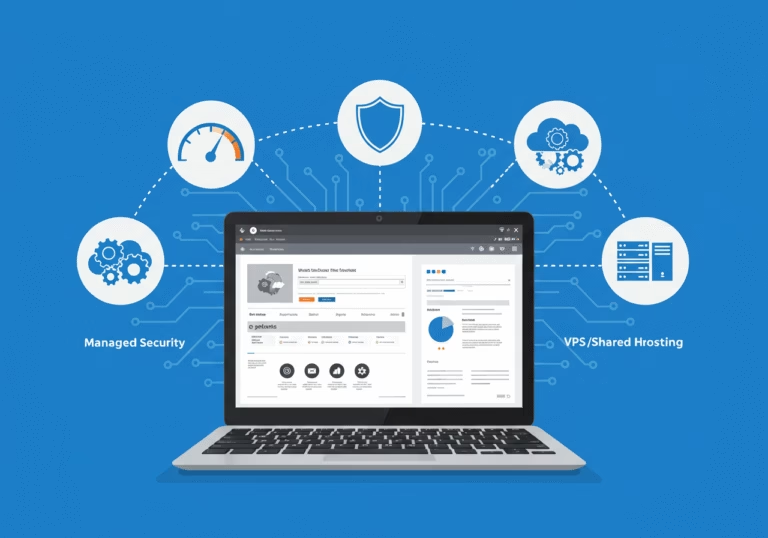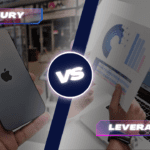The Hidden Cost of Digital Pollution

The internet accounts for 3.7% of global carbon emissions—more than the aviation industry. As climate-conscious consumers demand accountability, businesses can no longer ignore the environmental impact of their digital presence. For web designers and developers, adopting eco-friendly practices isn’t just a trend; it’s a strategic move to future-proof brands, meet regulations, and appeal to a growing audience of environmentally aware users.
Let’s explore how sustainable web design reduces carbon footprints while elevating client value.
Table of Contents
1. Eco-Friendly Web Design: 3 Core Strategies
A. Optimized Code for Leaner Energy Use
Bloated code forces servers and devices to work harder, increasing energy consumption. Streamline your approach with:
- Minified CSS/JavaScript: Remove unnecessary characters (e.g., comments, whitespace).
- Efficient Frameworks: Use lightweight libraries like Alpine.js instead of resource-heavy alternatives.
- Lazy Loading: Delay non-critical content (e.g., images below the fold) until users scroll.
Case Study: A fintech startup reduced page load time by 40% after minifying code, cutting energy use by 22% annually.
B. Energy-Efficient Hosting: Powering Sites Sustainably
Not all hosting is created equal. Prioritize providers that:
- Use Renewable Energy: Platforms like GreenGeeks or Kinsta run on 100% wind/solar power.
- Offer Carbon Offsets: Hostinger and SiteGround invest in reforestation and clean energy projects.
- Optimize Server Efficiency: Look for ISO 50001-certified data centers with advanced cooling systems.
Client Value: Sustainable hosting often improves uptime and page speed—key ranking factors for SEO.
C. Reduced Data Transfers: Less Waste, Faster Loads
Every megabyte transferred consumes energy. Trim data waste with:
- Compressed Media: Tools like ShortPixel shrink image sizes by 50%+ without quality loss.
- Caching & CDNs: Serve static content from local servers (e.g., Cloudflare’s green CDN).
- Dark Mode Options: Reduce screen energy use (bonus: a sleek, modern UX).
Example: An e-commerce site cut its homepage weight from 4MB to 1.5MB, reducing CO2 emissions by 1.2 tons/year.
2. Why Sustainability Aligns with Client Branding
A. Reputation & Differentiation
87% of consumers prefer brands advocating for environmental issues. A “green” website:
- Signals corporate responsibility.
- Attracts partnerships with like-minded businesses.
- Appeals to Gen Z and Millennial audiences (72% prioritize sustainability).
Branding Tip: Add a subtle “eco-friendly website” badge linked to a page explaining your sustainability efforts.
B. Regulatory Compliance Made Easier
The EU Accessibility Act and stricter ESG (Environmental, Social, Governance) reporting requirements demand transparency. Sustainable practices often overlap with accessibility goals:
- Faster sites benefit users with slow connections or disabilities.
- Clean code improves screen reader compatibility.
C. Performance = Profit
Google’s Core Web Vitals penalize slow, bloated sites. Eco-design naturally boosts:
- Load Speed: Walmart found a 1-second improvement increases conversions by 2%.
- Mobile Responsiveness: 53% of users abandon sites taking over 3 seconds to load.
- SEO Rankings: 60% of marketers say sustainable practices improve organic visibility.
3. Client Success Story: Bridging Sustainability and Sales
Challenge: A UK-based outdoor apparel brand wanted to align its online store with its eco-friendly mission but struggled with high bounce rates.
Solution: Mukwood Digital implemented:
- Green hosting powered by renewables.
- Compressed product images + lazy loading.
- A “Sustainability Hub” explaining their carbon-reduction efforts.
Results:
- 35% faster load time.
- 20% increase in organic traffic.
- 15% boost in email sign-ups (via a “Eco Tips” lead magnet).
4. Getting Started: Your Eco-Design Checklist
- Audit current site energy use with tools like Website Carbon Calculator.
- Migrate to a green host and enable caching/CDN.
- Optimize images and trim redundant code.
- Add sustainability messaging to your brand story.
- Monitor performance via Google Analytics’ Core Web Vitals.
Pro Tip: Offer clients a “Sustainability Report” post-launch, showcasing reduced emissions and alignment with ESG goals.
Sustainability is the Future of Web Design
Eco-friendly practices aren’t just about saving the planet—they’re a competitive advantage. By lowering carbon footprints, you future-proof client sites against regulatory shifts, build trust with conscious consumers, and unlock faster, more efficient performance.
Ready to build websites that win hearts and rankings?
👉 Contact Mukwood Digital for a free Sustainable Web Audit and discover how green design can elevate your brand.







